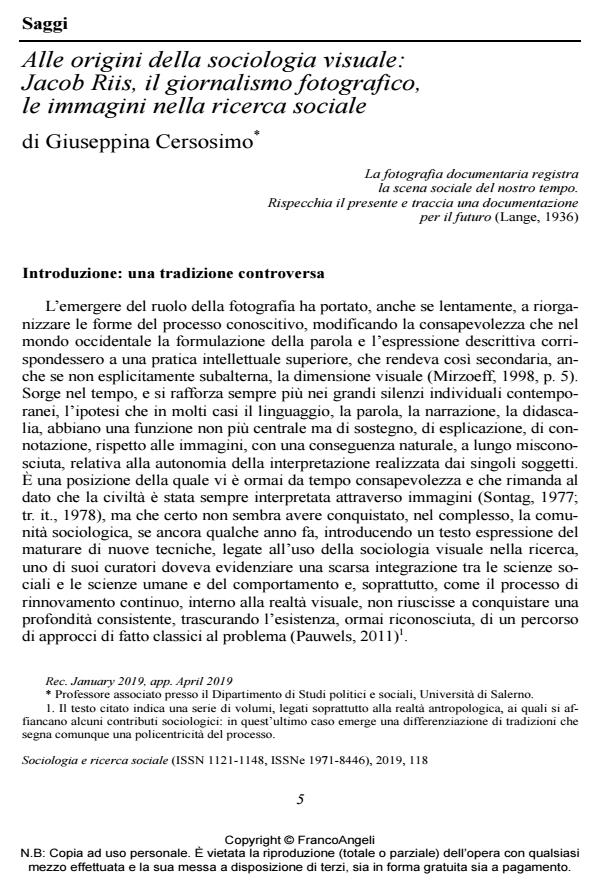At the origins of visual sociology: Jacob Riis, photographic journalism, images in social research
Journal title SOCIOLOGIA E RICERCA SOCIALE
Author/s Giuseppina Cersosimo
Publishing Year 2019 Issue 2019/118
Language Italian Pages 24 P. 5-28 File size 252 KB
DOI 10.3280/SR2019-118001
DOI is like a bar code for intellectual property: to have more infomation
click here
Below, you can see the article first page
If you want to buy this article in PDF format, you can do it, following the instructions to buy download credits

FrancoAngeli is member of Publishers International Linking Association, Inc (PILA), a not-for-profit association which run the CrossRef service enabling links to and from online scholarly content.
The photographs Jacob Riis took during his investigation on the dramatic conditions of immigrants in New York, have a specific role in the construction of social analysis outside the university, and anticipate, as a method, the analyti-cal approach later developed by visual sociology. The cognitive process thus broadens the tools at its disposal and acquiring new analytical approaches. It is historically coherent with the new characteristics of social transformation and with the presence of new technological products in the society. The develop-ment of visual sociology, consistent with these premises, over time highlights the renewal within the sociological tradition not only of its theoretical focus, but also of its methodological one.
Giuseppina Cersosimo, Alle origini della sociologia visuale: Jacob Riis, il giornalismo fotografico, le immagini nella ricerca sociale in "SOCIOLOGIA E RICERCA SOCIALE " 118/2019, pp 5-28, DOI: 10.3280/SR2019-118001